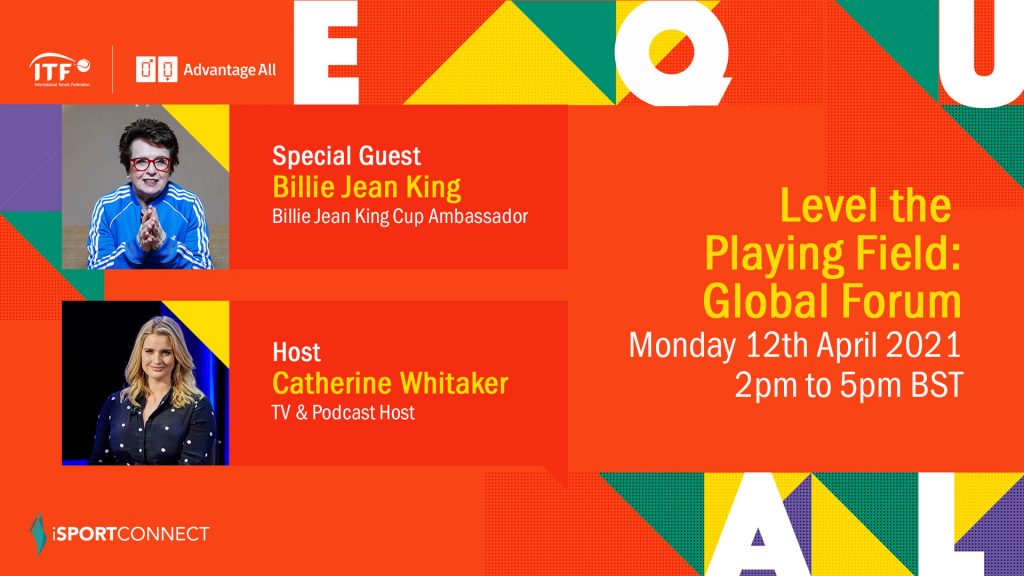‘Clear Differences Between Male And Female Portrayal’ – ITF Unveils New Research Into Gender Equality In Sport
April 12, 2021
The ITF has today announced the results of a first-of-its-kind global research project examining sports gender equality across the media and social media, commissioned as part of its ITF’s Advantage All gender equality strategy, which is supported by the Foundation for Global Sports Development and will be debated during the ‘Level The Playing Field’ Global Forum this afternoon.
Conducted and delivered by Ipsos MORI, the research explored how the representation of male and female athletes varies, identifying key differences by market and media type, as well as any differences in consumer searches between male and female players.
The report found that the conversation and coverage of men’s tennis is more focused on the sport, with a strong combative narrative and a sense of history, elite competition and achievement. Conversely, the conversation around women’s tennis is less intense and relatively more focused on life off court, from health and age to family.
Key findings from Global English, France and Spain data include:
• Women’s tennis content is twice as likely to reference a player’s age
• Men’s tennis content is twice as likely to refer to ‘battle’ terminology
• Men’s content is 70% more likely to mention a player’s physical prowess
• G.O.A.T was mentioned 50% more in men’s tennis content than women’s
• There were 40% more references to ‘making history’ in men’s tennis content
• Women’s tennis is over 2x more likely to mention health and medical treatment
• Women’s content is 30% more likely to refer to players’ family
• ‘Career’ is mentioned nearly 50% more in women’s coverage than men’s coverage. Although very rare, comprising less than 0.5% of online content, the research also found:
• Women’s content is nearly twice as likely to mention clothing vs men’s content
• There were 11x more mentions of skin colour in women’s tennis
• There were 3x as many mentions of BLM in women’s tennis
Looking at relative differences in content by channel reveals how the mainstream media is driving these differences. The research also shows very few differences in top search terms and search questions around male and female tennis players. Despite this, Google search results proved to be unbalanced: only 6 out of 50 search results are women if you Google “top 50 tennis players”.
Commenting on the findings, ITF President David Haggerty said “Voice is one of the key pillars of our Advantage All strategy. To make a positive impact in this area, it is vital that we have a credible understanding of media and social media language. The results reveal that, despite similar public appetite across both men’s and women’s tennis, there is a distinct difference in the narrative surrounding them. It’s important to acknowledge that this difference is not necessarily always negative, but we must avoid a situation where a different focus arises as a result of conscious or unconscious bias, as ultimately that can diminish the sporting achievements of female athletes.”
The research has been published ahead of the ITF’s global forum on gender equality, ‘Level the Playing Field’. Supported by BNP Paribas, who are committed to diversity issues and have been a worldwide tennis sponsor for several decades, and delivered by iSPORTCONNECT, the event will bring together influential and inspirational individuals from sport and business to debate and advance gender equality in proactive, solution-focused discussion. Billie Jean King, Victoria Azarenka, Chanda Rubin, Caroline Weir and Annika Sorenstam are among a star-studded line-up of speakers.
Level the Playing Field will be broadcast live on Monday 12 April, 2pm-5pm BST. To watch the event live, please follow this link > LEVEL THE PLAYING FIELD LIVE STREAM



